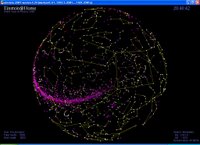 The Large Hadron Collider of CERN is nearing completion with the delivery of the last superconducting main magnet to the facility last November 27. The LHC will be the biggest and most powerful particle accelerator in the world when it is completed and becomes operational in November 2007.
The Large Hadron Collider of CERN is nearing completion with the delivery of the last superconducting main magnet to the facility last November 27. The LHC will be the biggest and most powerful particle accelerator in the world when it is completed and becomes operational in November 2007.The facility hopes to study dark matter and other physical and cosmological phenomena, as well as create new particles, including the so-called God particle.





